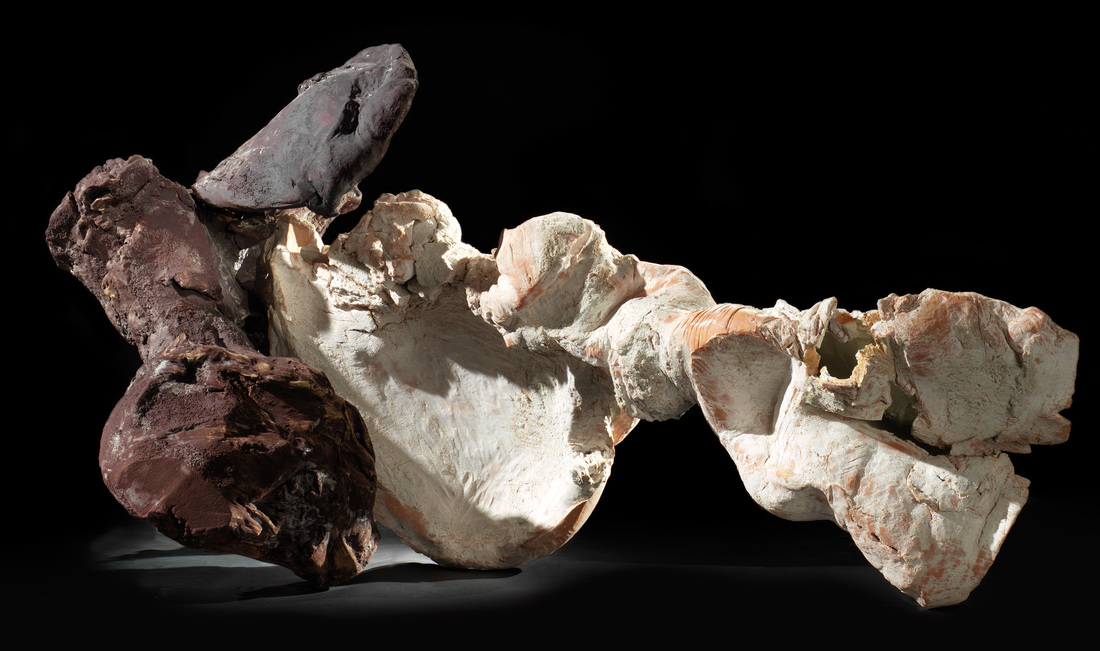
Every great work of art conveys a story, but to make the artwork stand above the rest the story must be significant. Chen’s Mother and Child series tells a personal story of pain, family, and – more importantly – love. This particular piece beautifully narrates the story of love surfacing from much anguish.
Although the Mother and Child series had beginnings from Chen’s mother being diagnosed with Parkinson’s, the disease was not the inspiration for the this particular piece of art within the series. This artwork was inspired from the respect, honor, and love he had for his mother – not from selfish ambition.
This artwork shows the movement of influence one piece has on the other. The impactful message is best conveyed by the size of the darker piece. Chen wants to communicate that his mother was his source of inspiration with this particular artwork. Notice how overwhelming the darker piece is compared to the white piece. The color and rough texture indicate the nature of the disease and the struggles and pain that was shared, but it is the size of the darker piece that communicates the influence – or inspiration – it has on the lighter piece.
Chen believes if he loses sight of his mother being his inspiration, then he will lose the focus of his pure mission in his art endeavors, which would then result in a loss of his identity. So, he meticulously formed this piece of the Mother and Child series to honor his mother for developing him from a child to a man through her knowledge, wisdom, and support by pushing him to audaciously fulfill his potential as a man and an artist.
The most interesting aspect is the unglazed portion of the white piece. Chen left a portion of the clay unglazed to leave it in its rawest form – intentionally. Why? It portrays the purest form of love revealed from pain, but born from the borderless connection shared between the mother and child. So, this artwork shows the influential aspect of the love and how it impacts the receiver, which is the child in this case. Chen conveys how the intangible influence of love can create an everlasting impression by letting his hands do his heart's work with clay.
Although the Mother and Child series had beginnings from Chen’s mother being diagnosed with Parkinson’s, the disease was not the inspiration for the this particular piece of art within the series. This artwork was inspired from the respect, honor, and love he had for his mother – not from selfish ambition.
This artwork shows the movement of influence one piece has on the other. The impactful message is best conveyed by the size of the darker piece. Chen wants to communicate that his mother was his source of inspiration with this particular artwork. Notice how overwhelming the darker piece is compared to the white piece. The color and rough texture indicate the nature of the disease and the struggles and pain that was shared, but it is the size of the darker piece that communicates the influence – or inspiration – it has on the lighter piece.
Chen believes if he loses sight of his mother being his inspiration, then he will lose the focus of his pure mission in his art endeavors, which would then result in a loss of his identity. So, he meticulously formed this piece of the Mother and Child series to honor his mother for developing him from a child to a man through her knowledge, wisdom, and support by pushing him to audaciously fulfill his potential as a man and an artist.
The most interesting aspect is the unglazed portion of the white piece. Chen left a portion of the clay unglazed to leave it in its rawest form – intentionally. Why? It portrays the purest form of love revealed from pain, but born from the borderless connection shared between the mother and child. So, this artwork shows the influential aspect of the love and how it impacts the receiver, which is the child in this case. Chen conveys how the intangible influence of love can create an everlasting impression by letting his hands do his heart's work with clay.

 RSS Feed
RSS Feed